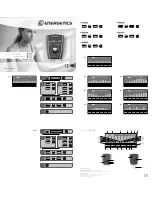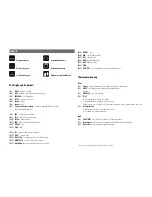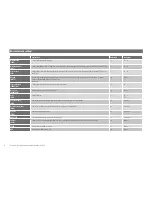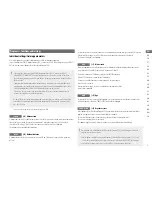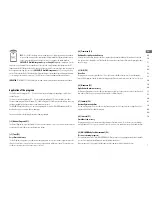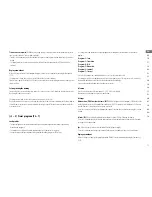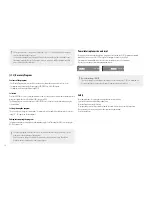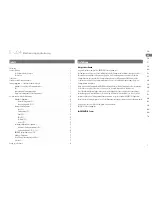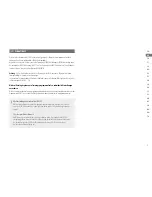
EN
DE
FR
FI
SV
RU
PL
CS
HU
SK
UK
SL
EL
HR
BS
SR
BG
RO
TR
7
NFC
– Near Field Technology is a new technology which enables your training equipment to
wirelessly communicate to your smartphone . In order to upload all of your workout statistics
such as time, speed, distance, average heart rate, etc ., you only need to download the
ENERGETICS Health Management
App from
Google Play
to your smartphone . Once the
App has been installed and all the personal data has been entered, simply hold your smartphone near the NFC
logo and push the NFC button on the App . As soon as you have successfully transmitted your data, everything can
be navigated on your App . You can also use
ENERGETICS Health Management
as a GPS running or cycling
tracker . Please note the the NFC function will not allow you to operate your product console during the workout
(i .e . increasing or decreasing resistance, etc .) . The NFC feature is simply an indoor workout tracking device .
IMPORTANT:
The ENERGETICS Health Management App is currently only available for Android Smart Phones .
Application of the programs
The 6 different preset programs (P 2 – 7) are meant to assist you in finding and controlling a sensible effort
suitable for you .
The heart rate controlled programs (P 9 – 12) have no defined load profile . The heart rate guides the effort .
The two custom programs Manual Program (P 1) und User Program (P 13) offer you the possibility to train using
your own standards or creating your own custom program respectively .
The BMI-BMR-Body Fat Measurement is not a trainings program . It calculates BMI, BMR and body fat (FAT%)
based on the values entered and indicates body type .
Your exercise goals are the deciding factor when choosing a program .
[» 2] Manual Program (P 1)
The Manual Program has no set load profile . All time-/resistance columns are set at the same resistance value . You
can change the level of effort at any time during the work out .
[» 3] Tour (P 2)
Easy effort and recovery
The Tour Program is designed as easy effort and recovery program with easy cycles without significant peaks . The
effort starts in the lower levels of resistance, increases gently and afterward decreases again . The second increase
in effort has the same time and resistance curve as the first .
[» 4] Transition (P 3)
Medium effort with period of recovery
It starts with relatively high effort that decreases continually until about the middle of the work out session and
then again increases toward the end . The effort for the last portion is equal to the effort in the beginning but does
not last as long .
[» 5] Hill (P 4)
Even effort
This program starts on a very low effort level, has a slight increase of effort then remains the same for approxi-
mately half the program . Toward the end of the program the effort is returned to the same low level as at the start .
[» 6] Mountain (P 5)
High effort with minimal recovery
The Mountain Program increases the effort starting from a very low level in equal increments to a high effort level,
then reduces effort, but still remaining fairly high until the end of the Program .
[» 7] Summit (P 6)
Continually increasing effort
The Summit Program increases the effort starting from a very low level in 5 equal steps until a high effort level is
reached and held until the end of the program .
[» 8] Interval (P 7)
Quick effort and recovery
This program emphasises the continuous change between effort and recovery . The resistance is increased and de-
creased periodically . These cycles are repeated 3 times . The goal here is to speed up recovery after periods of effort .
[» 9] BMI-BMR-Body Fat Measurement (P 8)
This is not a trainings program
The calculations of the values in the BMI-BMR-Body Fat Measurement assist in judging your body and its capabili-
ty, as well as help to find the right program and the right workout extent .
Using the input values (age, gender, weight and height) the computer calculates individual values


